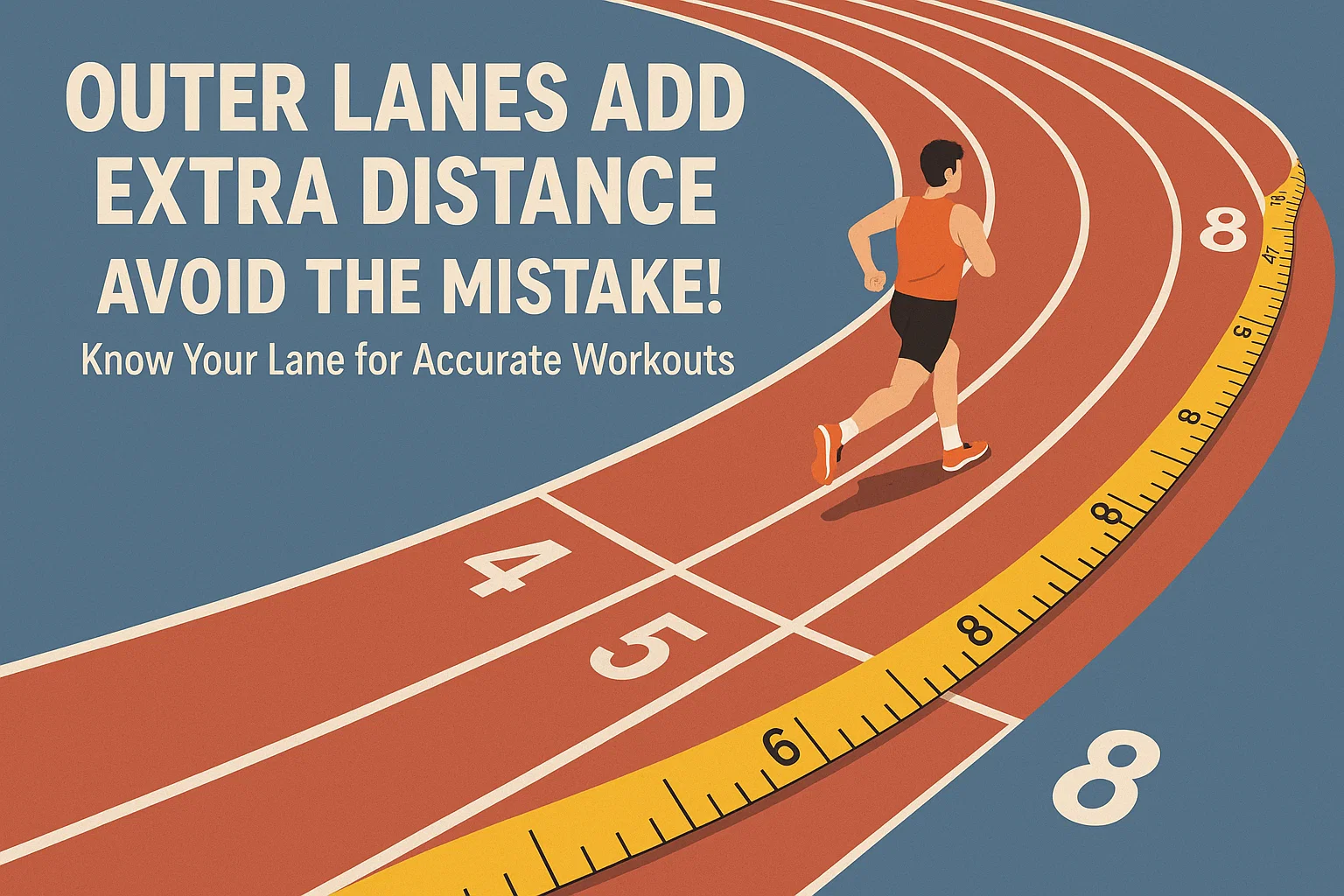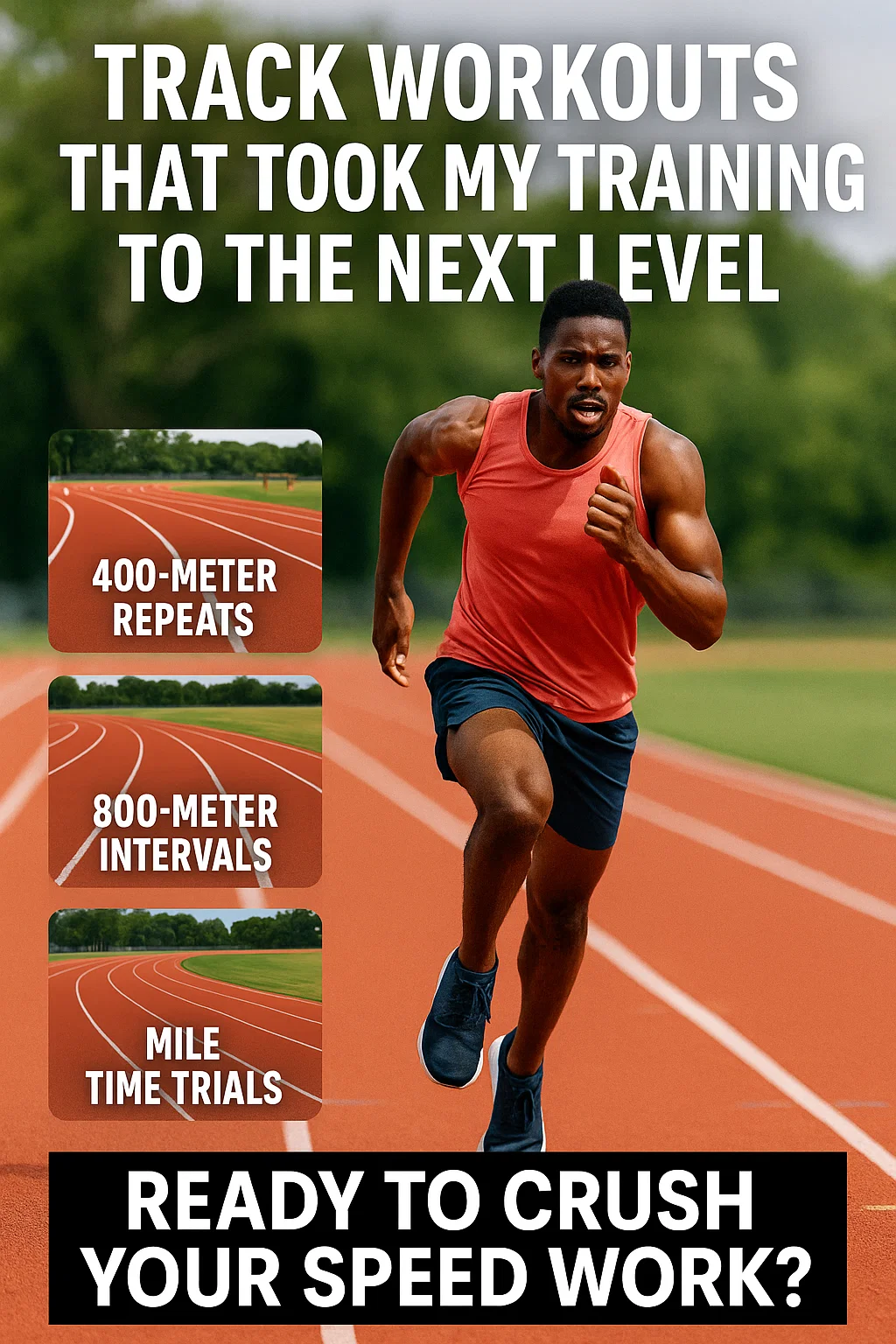Running a track might seem simple—just 4 laps to a mile, right?
Wrong.
I’ve spent more than enough time on the track to know that lane choice, pacing, and even the way you think about the run can totally change how your workout goes.
Let’s break down how many laps really make a mile—and trust me, knowing this can seriously up your running game.
Quick Quiz: Are You Track Savvy?
Alright, before we get into the nitty-gritty, here’s a quick quiz to see how track-savvy you really are:
- Does running three laps around a 400-meter track equal one mile?
- Does running seven laps in lane 3 equal two miles?
- Is a straightaway 100 meters long?
- Are all lanes on a track the same distance?
- Is a “metric mile” 1500 meters?
Here are the answers:
- No
- No
- Yes
- No
- Yes
How’d you do? If you got them all right, high-five! If not, no worries—I’m about to drop all the track distance knowledge you’ll need.
How Many Laps Is a Mile?
On a standard 400-meter track, 4 laps should equal a mile. But here’s the kicker: it all depends on the lane you’re running in.
- Lane 1: 400.0 meters
- Lane 2: 407.7 meters
- Lane 3: 415.3 meters
- Lane 4: 423.0 meters
- Lane 5: 430.7 meters
- Lane 6: 438.3 meters
- Lane 7: 446.0 meters
- Lane 8: 453.7 meters
Trust me, I’ve learned this the hard way—the outer lanes? Yeah, they add more distance. I used to always run in them to dodge the crowd, but that was a total rookie mistake. Once I figured that out, I started paying closer attention to which lane I was in—and it made a huge difference.
Curious about track rules? Here are a few places to dig deeper:
- The USAF
- The US track & Field website.
- The Wikipedia guide to USA Track & Field
- The History of Track and Field
- Track running workouts to try.
- Track running etiquette.
My First Big Track Mistake
Back when I first started track workouts, I had no clue how much the lanes affected my distance. I used to crush my intervals in Lane 8, thinking I was getting more space, but later realized I was running way more than I bargained for. Finding out all that extra distance was messing with my pacing? Super frustrating.
When I switched to Lane 1 for more accuracy, I instantly noticed how much more dialed-in I was to hitting my target times.
So, if you’re anything like I was and you prefer running in those outer lanes, just know you’re adding extra meters without even realizing it!
Why Track Workouts Are Essential
Not everyone’s a fan of the track. I get it—some runners would rather hit the road or trails. But for me? The track’s become a secret weapon. It’s one of my favorite tools in training—and here’s why:
- Precision: The track is measured to the meter, and that’s something I’ve come to rely on. Whether you’re tackling intervals, tempo runs, or pacing yourself for a race, you always know exactly how far you’ve gone.
- Consistency: The track is the one place you know you’re going to get a flat, consistent surface every time. There’s no worrying about traffic, potholes, or hills. It lets you focus on form and speed without distractions.
- Speed Work: The track is the place for speed work. It’s where I go when I’m ready to test my limits and sharpen my pacing. When I first started, my times started improving within weeks—no joke.
Track Workouts That Transformed My Training
Here are a few of my go-to track workouts that I swear by:
- 400-Meter Repeats: This is my bread and butter for speed work. I run 1 lap at 85-90% effort, followed by a 200-meter jog or walk for recovery. I repeat this 6-8 times. It builds speed and stamina, and for me, it’s one of the best workouts to lock in pacing on race day.
- 800-Meter Intervals: Two laps at a tough pace, then 2 minutes rest. I usually crank this out 4-6 times. It’s tough, but it’s great for endurance and mental toughness—especially for longer races like the half marathon and 10K. It taught me to sustain my effort over longer periods without fading. Training for a marathon? Try the Yasso 800s.
- Mile Time Trials: Every few weeks, I’ll rip through a mile (4 laps) at max effort. It’s my personal fitness check. It’s always brutal, but the best part? Seeing how much I’ve improved each time. I still remember the first time I ran a sub-7-minute mile on the track. Felt like I’d just won a race.
Note – If you want to make the most out of your track workouts, remember the respect its etiquette.
The Tech That Keeps Me On Track
I can’t talk about track workouts without mentioning tech. When I first started, keeping track of my laps was a mental challenge. I would sometimes lose count, especially on long intervals. That’s where the right gear comes in handy.
Best Fitness Watches for Track Running
If you’re really into track running, having the right GPS watch is a total lifesaver. These watches do more than count steps—they’ve got modes that lock onto your laps like they’re reading your mind.
Say goodbye to those annoying zig-zag errors when you’re cutting corners. And evolving tech, these watches are way ahead of what we had before.
Here are some of my favorites:
Garmin Forerunner Series (265/965 and Newer)
Garmin’s track mode is the real deal—and I’m not just saying that. These watches lock onto the track and keep your lap splits super accurate. What’s even cooler?
It connects to a community database to figure out the track layout, so your distance is dead-on—even on curves. I’ve had plenty of laps where the GPS went haywire, but with Garmin, your 400m splits are spot on.
The Forerunner 970 and Fenix 8 (Garmin’s premium models) take it to the next level, giving you all those fancy training metrics to track your progress like a pro.
Apple Watch (Series 9 / Ultra 2)
I know, I know—Apple’s not just for the casual runners out there. The Series 9 and Ultra 2 introduced a game-changer with their automatic Track Detection mode.
As soon as you hit that 400m track, your Apple Watch locks onto the distance, no questions asked. It’s smooth, intuitive, and just works. And if you’re serious about running, the Ultra 2 has extra battery life, plus a new Action Button that’s perfect for quickly marking laps.
COROS Pace 3 (and Apex Series)
COROS was onto something with their track mode, and the Pace 3 (2023) still nails it. This lightweight, budget-friendly watch knows when you’re on the track and makes sure your splits are right on point. I’ve used it during interval training, and it never misses a beat. Plus, the battery life is solid, and you’re not breaking the bank.
Polar and Others
Polar’s newer models, like the Pacer Pro and Vantage, don’t have a dedicated track mode, but they’re still pretty reliable. You can set your lap splits yourself, like every 400m, or just tap the lap button when you cross the line.
The GPS is decent, but it’s not quite as dialed in as Garmin or Apple when it comes to track accuracy. Still, if you’re using Polar or a Wahoo ELEMNT RIVAL (which recently got a track mode update), you’ll still get pretty good splits, especially if you’re more into general training rather than race-level precision.
Apps to Keep Track of Laps
Even if you’re not using one of these fancy GPS watches, don’t sweat it! There are plenty of apps that can keep your laps in check and help you track your progress. I use these apps all the time, and they’ve never let me down.
Strava
Strava’s my app of choice. It tracks my laps and splits without fail, and I love looking back at my workouts to see how I’m improving. And I get to see how I compare to other runners around here—keeps that competitive fire burning. If you’re not using Strava, what are you even doing?
Nike Run Club (NRC)
Nike Run Club is awesome for track workouts, especially if you like audio cues to help keep your pace in check. It’s like having a coach right there with you—super helpful during those grueling intervals.
MapMyRun
MapMyRun’s great when you just need to keep it simple. It’s a straight-up app that tracks your distance, time, and pace, no distractions.
Staying Focused During Track Workouts
The track can be a real head game, especially when you’re cranking out lap after lap. Here’s what keeps me focused during my workouts:
- Breaking It Down: I treat every lap like its own little challenge. If I’m doing intervals, I’m constantly thinking about pacing and form. This keeps me engaged and prevents me from getting bored.
- Tracking My Pace: I’m always aware of my pace, especially during intervals. I track my lap times using my watch or phone, and that instant feedback helps me adjust my pace on the fly.
- Staying Mentally Engaged: For long workouts, I always picture that finish line to keep me locked in. Whether it’s finishing a brutal workout or chasing a PR, I always picture that finish line to keep me locked in.
FAQ: Running on a Track
Q1: How many laps equal a mile on a track?
On a standard 400-meter track, 4 laps equal approximately 1 mile (1,609 meters).
Q2: Why does lap distance vary by lane?
Because outer lanes are longer than inner lanes, runners in outer lanes cover more distance per lap due to the track’s curvature.
Q3: How to measure distance when running on a track?
Use the inside lane for consistent measurements—400 meters per lap. For other lanes, add about 7–8 extra meters per lane beyond lane one.
Q4: How many laps to run for a 5K on a track?
A 5K is 12.5 laps on a standard 400-meter track, usually starting at the 200-meter mark for proper distance.
Q5: Does running in different lanes affect your pace?
Yes—outer lanes are longer per lap, so your pace may appear slower unless you adjust for the extra distance.
Q6: How do staggered starts work in track races?
Staggered starts compensate for the extra distance in outer lanes, ensuring all runners cover the same distance by the finish line.
Q7: Is the inside lane always 400 meters?
Generally yes—lane one is 400 meters, though slight measurement differences can exist between tracks.
Q8: How should I pace myself on a track?
Use even splits for each lap—aim for a steady pace per 400 meters, then adjust as needed for your goal time.
Q9: Is it better to train on a track or the road?
Both have benefits—tracks are predictable and great for speed work, while roads mimic real-world race conditions.
Final Thoughts
The track has become an essential part of my training. It’s not just about hitting the mile mark or completing laps—it’s about pushing your limits and tracking your progress. Whether you’re working on speed, endurance, or race-day pacing, the track offers precision and consistency that you can’t get on the road or trails.
Call to Action:
What’s your track routine like? Do you prefer using the track for speed work, or do you mix it up with other routes? Drop your thoughts or favorite track workouts in the comments below.
Let’s keep grinding and push each other to new heights!




